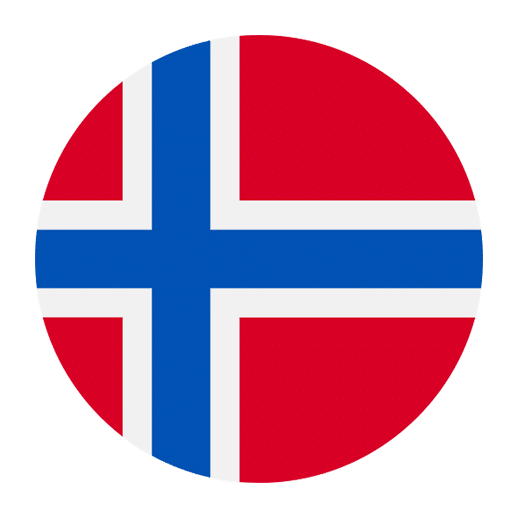Learning a new language often involves diving into specific vocabulary pertinent to various aspects of life, such as banking and finance. For those interested in Norwegian, acquiring terminology in these fields can be particularly useful for both professional and personal reasons. Whether you are planning to work in Norway, manage your finances, or simply want to be well-versed in the language, this comprehensive guide will help you understand and use Norwegian banking and finance vocabulary effectively.
Common Banking Terms
Understanding basic banking terms is the first step in navigating the financial landscape in Norway. Here are some essential words and phrases:
– **Bank**: Bank
– **Account**: Konto
– **Savings account**: Sparekonto
– **Checking account**: Brukskonto
– **Interest rate**: Rentesats
– **Loan**: Lån
– **Credit**: Kredit
– **Debit**: Debet
– **Balance**: Saldo
– **Deposit**: Innskudd
– **Withdrawal**: Uttak
– **Transfer**: Overføring
– **ATM**: Minibank
– **Branch**: Filial
– **Bank statement**: Kontoutskrift
– **Overdraft**: Overtrekk
Opening and Managing a Bank Account
When opening a bank account in Norway, you’ll likely encounter a variety of forms and processes. Here are some relevant terms:
– **Identification**: Identifikasjon
– **Proof of address**: Adressebevis
– **Signature**: Signatur
– **Joint account**: Felleskonto
– **Online banking**: Nettbank
– **Mobile banking**: Mobilbank
– **PIN code**: PIN-kode
Norwegian banks often provide online and mobile banking services, which are convenient for managing your finances. Here’s some vocabulary related to these services:
– **Username**: Brukernavn
– **Password**: Passord
– **Login**: Pålogging
– **Logout**: Utlogging
– **Security code**: Sikkerhetskode
– **Transaction history**: Transaksjonshistorikk
– **Bill payment**: Regningsbetaling
– **Direct debit**: Direkte belastning
Financial Products and Services
Banks offer a variety of financial products and services. Understanding these terms can help you make informed decisions:
– **Investment**: Investering
– **Mortgage**: Boliglån
– **Insurance**: Forsikring
– **Pension**: Pensjon
– **Mutual fund**: Aksjefond
– **Stock**: Aksje
– **Bond**: Obligasjonslån
– **Dividend**: Utbytte
– **Broker**: Megler
– **Portfolio**: Portefølje
– **Risk**: Risiko
– **Return**: Avkastning
– **Fee**: Gebyr
– **Commission**: Provisjon
Loans and Credit
Loans and credit are crucial aspects of personal and business finance. Here are some key terms:
– **Personal loan**: Personlig lån
– **Business loan**: Bedriftslån
– **Student loan**: Studielån
– **Credit card**: Kredittkort
– **Credit limit**: Kredittgrense
– **Interest-free period**: Renteperiode uten renter
– **Repayment**: Tilbakebetaling
– **Debt**: Gjeld
– **Installment**: Avdrag
– **Fixed interest rate**: Fast rente
– **Variable interest rate**: Variabel rente
Financial Planning and Budgeting
Effective financial planning and budgeting are essential for maintaining healthy finances. Here are some useful terms:
– **Budget**: Budsjett
– **Income**: Inntekt
– **Expense**: Utgift
– **Savings**: Sparing
– **Investment plan**: Investeringsplan
– **Financial goal**: Økonomisk mål
– **Emergency fund**: Nødfond
– **Net worth**: Nettoformue
– **Cash flow**: Kontantstrøm
Taxes
Taxation is a critical part of financial planning. Here are some terms you might encounter:
– **Tax**: Skatt
– **Income tax**: Inntektsskatt
– **Tax return**: Selvangivelse
– **Tax deduction**: Skattefradrag
– **Tax rate**: Skattesats
– **VAT (Value Added Tax)**: Merverdiavgift (MVA)
– **Taxable income**: Skattepliktig inntekt
– **Tax exemption**: Skattefritak
Business Finance
If you are involved in business, understanding business finance vocabulary is essential. Here are some key terms:
– **Revenue**: Inntekt
– **Profit**: Fortjeneste
– **Loss**: Tap
– **Expense**: Kostnad
– **Invoice**: Faktura
– **Receipt**: Kvittering
– **Balance sheet**: Balanse
– **Income statement**: Resultatregnskap
– **Cash flow statement**: Kontantstrømoppstilling
– **Equity**: Egenkapital
– **Liability**: Forpliktelse
– **Asset**: Eiendel
– **Depreciation**: Avskrivning
– **Amortization**: Amortisering
Corporate Finance
Corporate finance involves managing a company’s financial activities. Here are some relevant terms:
– **Capital**: Kapital
– **Investment banking**: Investeringsbank
– **Merger**: Fusjon
– **Acquisition**: Oppkjøp
– **IPO (Initial Public Offering)**: Børsnotering
– **Shares**: Aksjer
– **Stakeholder**: Interessent
– **Dividend policy**: Utbyttepolitikk
– **Leverage**: Giring
– **Financial analysis**: Finansanalyse
International Finance
For those engaged in international finance, understanding the following terms is essential:
– **Exchange rate**: Valutakurs
– **Foreign currency**: Utenlandsk valuta
– **Forex (Foreign Exchange)**: Valutamarkedet
– **Import**: Import
– **Export**: Eksport
– **Trade balance**: Handelsbalanse
– **International trade**: Internasjonal handel
– **Global market**: Globalt marked
– **Cross-border transaction**: Transaksjon over landegrensene
– **Remittance**: Pengeoverføring
Economic Indicators
Economic indicators help assess the economic performance of a country. Here are some useful terms:
– **GDP (Gross Domestic Product)**: BNP (Bruttonasjonalprodukt)
– **Inflation**: Inflasjon
– **Deflation**: Deflasjon
– **Unemployment rate**: Arbeidsledighetsrate
– **Interest rate**: Rentesats
– **Consumer Price Index (CPI)**: Konsumprisindeks (KPI)
– **Producer Price Index (PPI)**: Produsentprisindeks (PPI)
– **Economic growth**: Økonomisk vekst
Useful Phrases and Sentences
To help you use the vocabulary in context, here are some useful phrases and sentences:
– “I would like to open a **savings account**.” – “Jeg vil gjerne åpne en sparekonto.”
– “What is the current **interest rate** on a **mortgage**?” – “Hva er den nåværende rentesatsen på et boliglån?”
– “I need to transfer money to another **account**.” – “Jeg må overføre penger til en annen konto.”
– “Can I pay this **bill** online?” – “Kan jeg betale denne regningen på nettet?”
– “How much is the **monthly installment** for this **loan**?” – “Hvor mye er den månedlige avdraget for dette lånet?”
– “What are the **fees** for international **transfers**?” – “Hva er gebyrene for internasjonale overføringer?”
– “I need a **receipt** for this **transaction**.” – “Jeg trenger en kvittering for denne transaksjonen.”
– “What is the **exchange rate** for euros today?” – “Hva er dagens valutakurs for euro?”
– “I want to invest in a **mutual fund**.” – “Jeg vil investere i et aksjefond.”
– “How do I apply for a **student loan**?” – “Hvordan søker jeg om et studielån?”
Conclusion
Mastering Norwegian vocabulary for banking and finance can significantly enhance your ability to manage your finances and engage in professional activities in Norway. By familiarizing yourself with these essential terms and phrases, you will be better equipped to navigate the Norwegian financial system with confidence. Whether you are opening a bank account, applying for a loan, or investing in the stock market, this guide provides a solid foundation for understanding and using Norwegian banking and finance vocabulary effectively. Happy learning!

